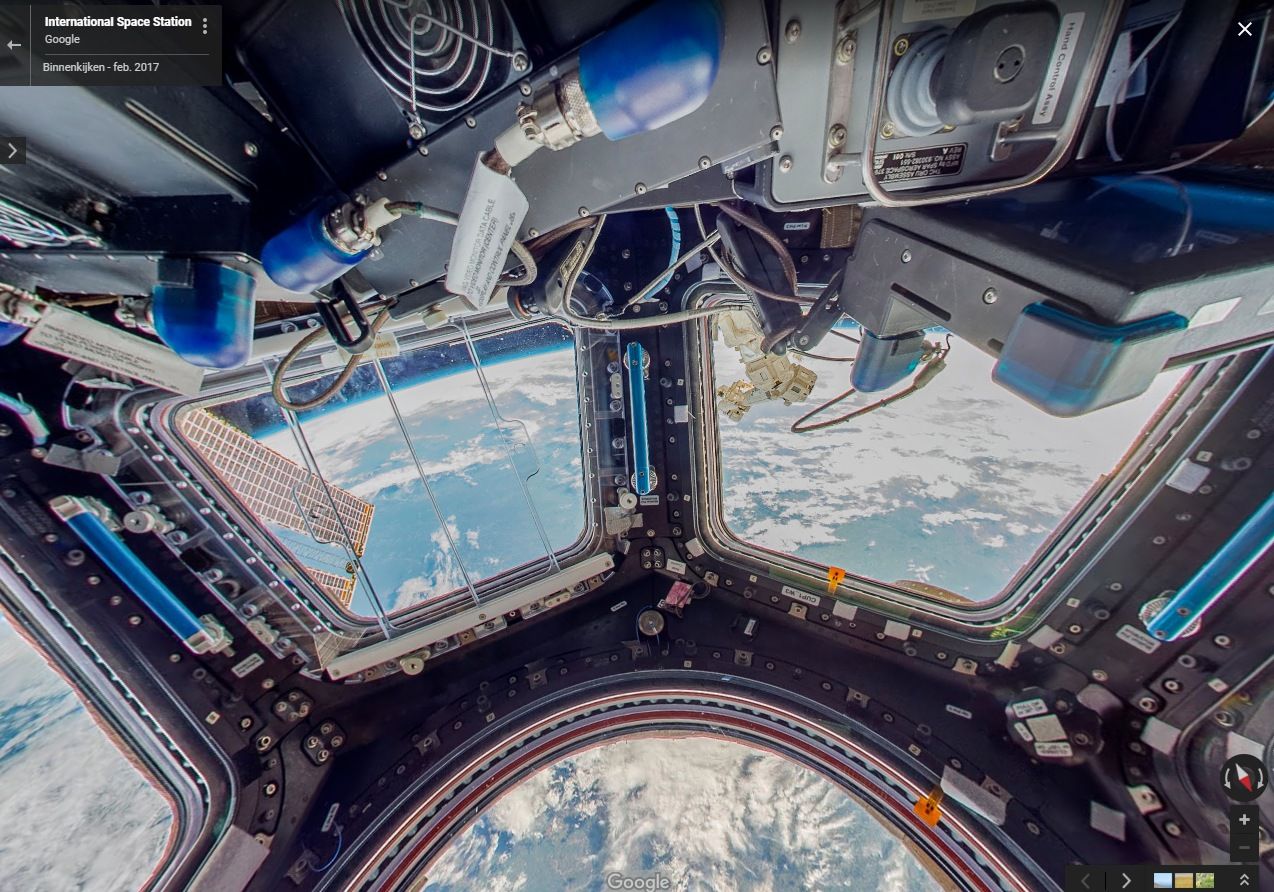
The cupola with its six huge viewing ports offers stunning sights on our home planet. You can see a venerable Soyuz spacecraft docked to the ISS.
A Soyuz docks. A SpaceX Dragon berths. There's a difference, it's got something to do with the docking manoeuvre being solely between the Space Station and the visiting spaceship (in this case the Soyuz), while for berthing the spaceship, in this case the Dragon, is 'grabbed' by the Canadarm2, its movement dampened, and put ever so cautiously on the berthing port. Since this is a relatively simple design, not using shock absorbers and all kinds of automated locks like a docking port, a berthing port can be bigger, hence bigger items can be brought into the ISS.
Canadarm2 is the further development of Canadarm1 which was used on the Space Shuttle. Canadarm2 was deployed first on STS-100 in April 2001, and has a length of 17.6 m (58 ft) when it's fully extended. It's got seven motorized joints (an 'elbow hinge' in the middle, 3 rotary joints at each of the 'wrist/shoulder' ends). Weighing 1,800 kg (4,000 lb), it has a diameter of 35 cm (14 in), and it is capable of handling huge payloads of up to 116,000 kg (256,000 lb). Most marvellous of all, it is self-relocatable and can move end-over-end to reach many parts of the Space Station in an inchworm-like movement, as long as there are dedicated anchor points (PDGF's, Power Data Grapple Fixtures).
MFBB.